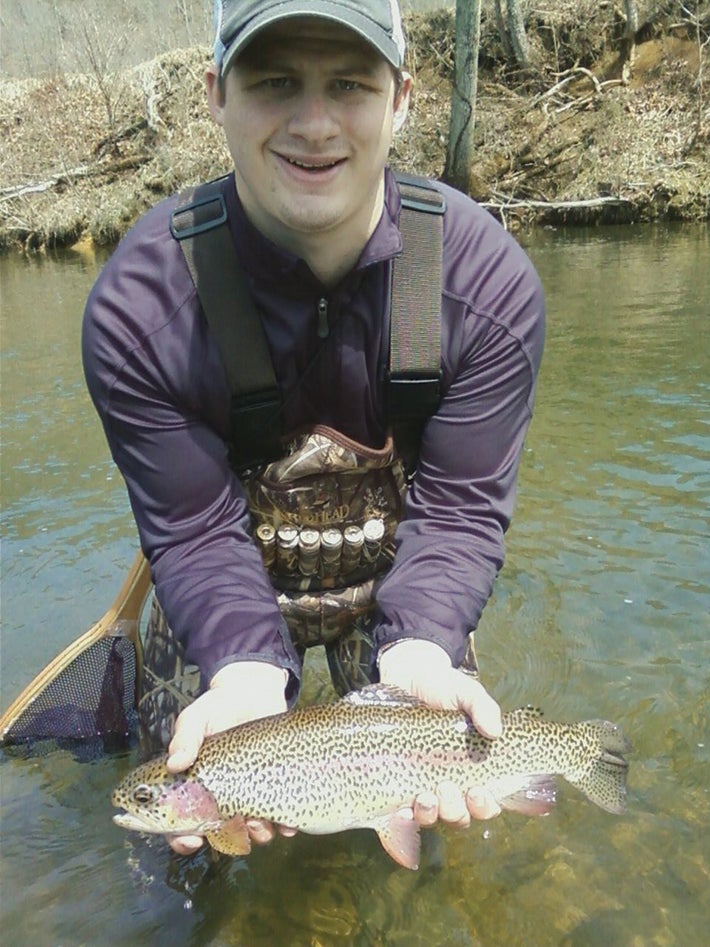Trout stocked for Saturday’s opening day
Published 9:03 am Thursday, March 30, 2023
|
Getting your Trinity Audio player ready...
|
 If you live in North Carolina’s high country or just visit regularly, you may have noticed trucks emblazoned with the N.C. WIldlife Resources Commission’s logo running up and down the roads – most of them gravel or sandy ones.
If you live in North Carolina’s high country or just visit regularly, you may have noticed trucks emblazoned with the N.C. WIldlife Resources Commission’s logo running up and down the roads – most of them gravel or sandy ones.
Saturday, April 1, will mark the official beginning of spring for outdoorsmen around North Carolina. It’s the first day of youth turkey season, but even more important, based on the number of participants, it’s the first day of trout season, which brings out all those trucks – trucks from the state’s fish hatcheries – carrying the better part of 750,000 brook, rainbow and brown trout to 1,000 miles of streams and ponds designated as Hatchery Supported Trout Waters.
The season, which has been closed since Feb. 29, will reopen at 7 a.m. Saturday after being closed for a month in order to allow the Commission to largely empty its hatchery runs and deposit those trout in places we can catch them. A list of those waters, and the stocking schedule, can be accessed at www.ncwildlife.org.
Streams, rivers and ponds that are stocked are marked by diamond-shaped, green-and-white signs. While many streams are publicly owned, a number are privately owned, whose owners have allowed the commission to stock the streams as they run through their property. Pay attention to the signs that mark the boundaries of public waters, or access the commission’s trout-fishing page, https://www.ncpaws.org/PMTWS/TroutSearch.aspx, to learn where the boundaries are.
In northwest North Carolina, six counties contain hatchery supported streams: Stokes (1), Surrey (6), Alleghany (10), Ashe (11), Watauga (13) and Wilkes (14). Regulations are a 7-fish daily creel limit with no bait or size restrictions. In addition, Alleghany, Ashe, Watauga and Wilkes counties are home to streams managed as wild trout waters, which have a 4-fish daily creel limit and 7-inch size minimum and lure restrictions (single-hook, artificial lures only). A handful of streams are managed as delayed-harvest waters; no fish can be kept until the first Saturday in June; the keeper season lasts into the fall, after which the streams are managed for catch-and-release only.
The commission hatches its trout for stocking at the Setzer, Armstrong and Marion state fish hatches and grows them out from fry and fingerling to keeper sizes: 7 inches or better. The Commission said that 96% of the trout it stocks will average 10 inches long, with 4% being stocked at 14 inches or longer. The stockings are broken down by species: 40% brook trout, 40% rainbows and 20% browns, the latter being more difficult to raise in a hatchery.
5 in Bassmaster Classic
Five fishermen from North Carolina participated in the Bassmaster Classic on the Tennessee River out of Knoxville.
Matt Arey of Shelby, K.J. Queen of Catawba, Brandon Card of Salisbury, Shane Lehew of Catawba and Louis Monetti of Charlotte were in the field.
Oklahoma’s Jason Christie is the defending champion, winning last March on South Carolina’s Lake Hartwell. He is the only past champion in the field this year.
Four North Carolina natives have won six Classics between them: Hank Parker of Denver, 1979 and 1989; David Fritts of Lexington, 1993; Randy Howell of Littleton, 2014; Hank Cherry of Maiden, 2020 and 2021.




